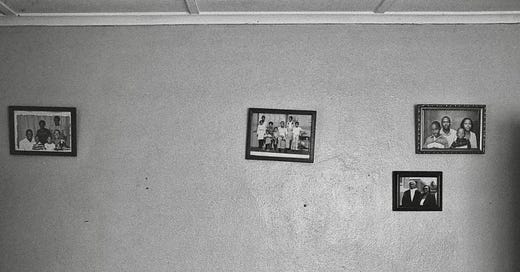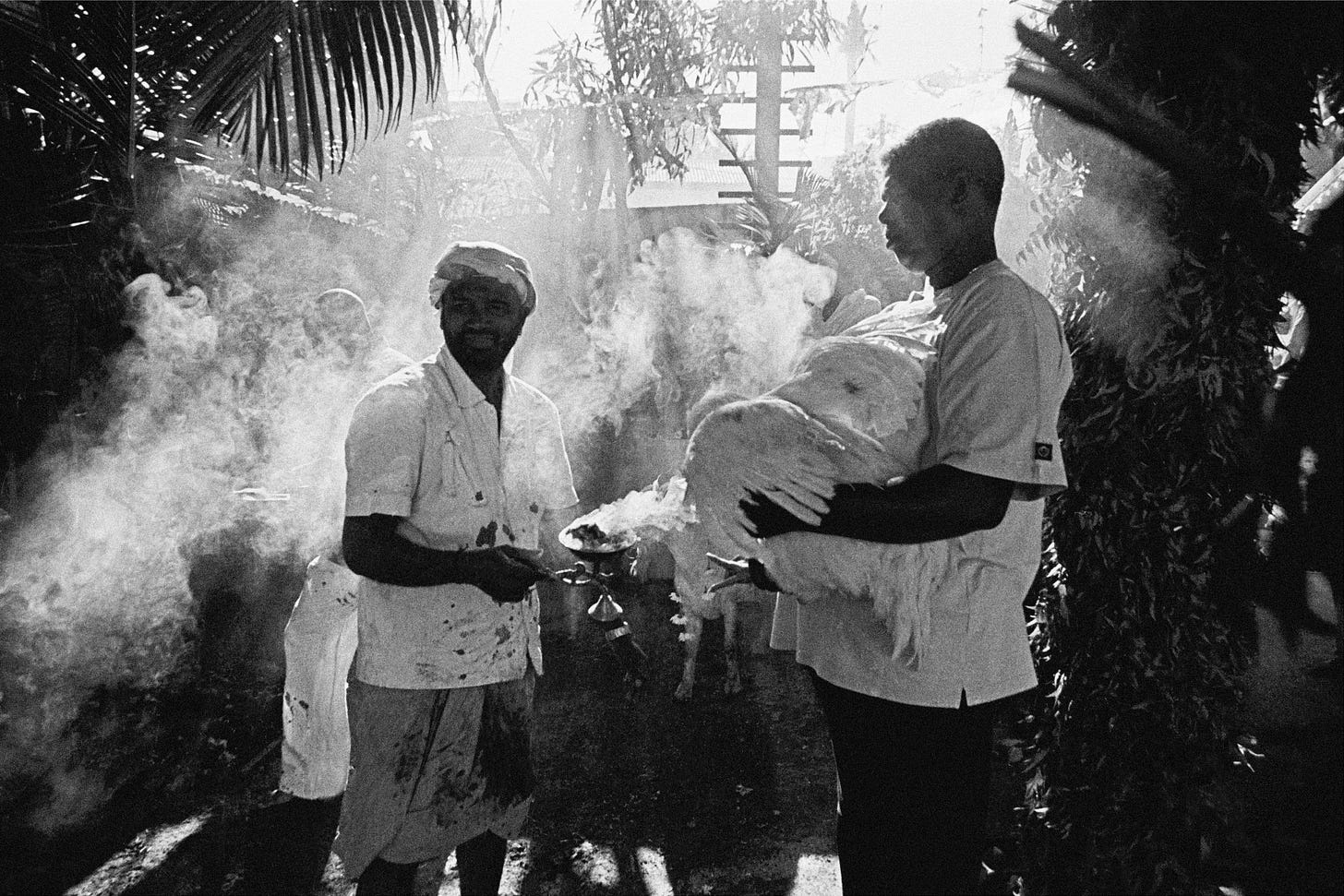A series of four framed family photographs are hung on a blank wall. Some are studio portraits, others are of graduations. There seems to have been more in between – more stories, memories, people. The wall is otherwise bare, highlighted by holes where nails once hung. The glaring space between the frames texture the wall with a character of loss.
— Sana Ginwalla
“Photography has the power to transcend the literal representation of reality.”
Last winter on a visit to family in Zambia, I took a two-hour bus ride from Lusaka to Kabwe to see my grandmother. While in her home, I observed a series of family portraits hanging from her wall. The photographs captured paternal family members, some of whom I had never met before. Although I had seen these photographs numerous times, what struck me the most about this moment was the placement of the picture frames. For the first time, I observed the space between the images across the wall, which echoed a sense of instability and distance. The tilted frames and empty nail holes in the wall were a poignant reminder of the physical and emotional space that exists between my family and I.
I photographed this observation as it reflects my journey of reconciling with my family. Before this trip to Kabwe, I had never visited my grandmother by myself. The journey of going to Kabwe and the very act of taking this photograph was a reparative step towards bridging the gaps that exist within my familial relationships.
In “Dark Mirrors,” Stanley Wolukau-Wanambwa attests that “(Photographs) trigger more in our minds than they can in fact hold in themselves.” Photography continues to be an entry point into processing and understanding the world around me. I think photography has the power to transcend the literal representation of reality. The images I make have a mundane quality while revealing more profound layers of meaning.
— Visule Kabunda
About Visule Kabunda
Visule Kabunda (b. 1997) is a Zambian-born photographer and graphic Designer. His work draws on his lived experience of displacement and reflects on its role in creating an evolving sense of belonging and identity. His practice seeks to find form and expression through a weaving of photography, collage, and self-publishing. More of his work can be seen on his website, Instagram and his feature on Photoworks UK.
LAST WEEK — “Hindu Ceremony of Kali,” by Andrew Tshabangu
The photograph reminds me of that time when I was in Piton Saint-Leu, Reunion Island. It was a challenging time for me because my sister passed away while I was there, and l could not return home immediately because at the time there was only one flight a week to South Africa. It was very helpful working with Rene-Paul there, as he knows very well the cultural, social, political and religious landscape of his island.
This is the 120th edition of this publication, edited by Sana Ginwalla, one of our editorial fellows. The newsletter also read on web (best for viewing images), and via the Substack iOS/Android apps.
TENDER PHOTO is a newsletter on African photography. Every Wednesday we feature a photograph and a short caption about it, and include a statement from the photographer. Last year, we published commentaries or photo-essays in response to photographs previously featured on the newsletter, including CORRESPONDENCES, CONCORDANCE, KINDRED, and INDEX. The latest series, AFFINITIES, ran between March 1–April 26. The next Friday series will begin in July.
Our goal is to work with African photographers by creating a platform in which they lead the cataloguing and engagement with their work.
Thank you for reading. If this newsletter was shared with you, consider subscribing, or forward to a friend. Please whitelist the newsletter to ensure you never miss it.







I love this. I recently visited family in Zambia too - it's a beautiful country and a beautiful reflection from Kabunda. Thank you!
Beautiful photos. I look forward to more excellent commentary as well.